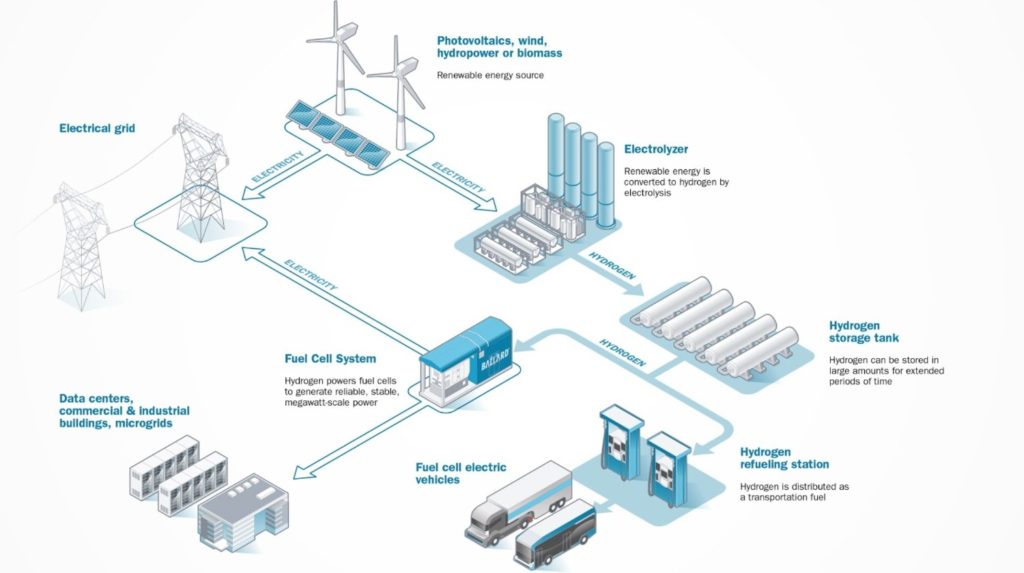
Renewable energy is growing at a record pace. The world added more than 260 gigawatts of green energy capacity in 2020, compared to just 60 gigawatts of fossil fuel additions. While these power sources are becoming more accessible and affordable all the time, they still face some challenges.
Storing energy from wind and solar installations has proved an ongoing challenge. The lack of an affordable and effective storage method has hindered renewables’ growth in the past, but that could change soon. The answer to this problem could lie with fuel cells.
The Need for Better Renewable Energy Storage

Unlike fossil fuels, renewables don’t generate electricity on demand, creating a practicality problem. Solar panels, for example, produce energy during the day, but people generally use more electricity at night. Users need a way to store this power for renewables to be a viable replacement for fossil fuels.
As renewables make up an increasingly substantial part of the $6 trillion global energy market, this problem becomes more pressing. Batteries are the most obvious answer, but these can be expensive, especially at the scale needed for an entire grid. Batteries also have a limited lifespan, making them insufficient for long-term storage.
If researchers can solve this storage issue, renewables could provide reliable, grid-wide power. They could finally overtake fossil fuels as the world’s primary energy source. Recent research shows that hydrogen fuel cells may be the answer.
How Fuel Cells Can Help
Fuel cells generate power from hydrogen, and they get this hydrogen from devices called electrolyzers. Electrolyzers split water into oxygen and hydrogen gas, which companies can then store long-term. Right now, 95% of electrolysis in the U.S. comes from fossil fuels. If renewables powered this process, it could make hydrogen more sustainable and fix the storage problem.
For example, wind farms, which produce 7% of U.S. energy, could power electrolysis plants, producing hydrogen gas, a carbon-free, storable fuel. Fuel cells would then turn that hydrogen back into electricity when users need it. This process emits no greenhouse gases and can meet flexible demand since grids can store hydrogen for extended periods.
In the past, this process wasn’t practical since electrolyzers and fuel cells rely on different catalysts. Newer devices called proton-conducting fuel cells (PCFCs) can handle both parts of the process. Early PCFCs were too inefficient to be viable, but new research has produced highly efficient versions.
Some new designs can harness 98% of the energy that flows into them to produce hydrogen. With that kind of efficiency, PCFCs could store and generate renewable energy with close to no losses. That would make wind or solar power comparable to fossil fuels.
Fuel Cells Are Some of the Most Promising Sustainable Technologies
Much of the discussion around fuel cells has focused on their use in powering vehicles or portable generators. As this new research shows, their use goes far beyond these applications. They could help push renewables towards widespread adoption.
Bringing fuel cells and renewable energy together makes the most of both technologies. These new systems would make fuel cells more sustainable while making renewables more flexible. Wind, solar and other green power sources could finally replace fossil fuels on a grid-wide scale.


Jane Marsh
Jane Marsh is the Editor-in-Chief of Environment.co. Jane covers topics related to climate policy, sustainability, green technology, renewable energy and more.
Read the most up to date Fuel Cell and Hydrogen Industry news at FuelCellsWorks




